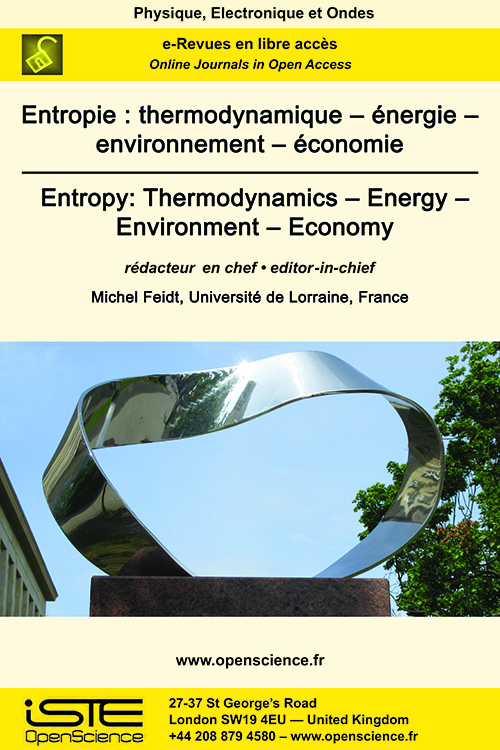

Physics > Home > Entropy: Thermodynamics – Energy – Environment – Economy > Issue
This article deals with the development of a numerical multiphysics model to study heat and mass transfer phenomena as well as the swelling during the baking of a cake contained in mold. The aim of this study is to provide an effective numerical tool, experimentally validated, for a better understanding of mechanisms leading to the desired end product. Various operating conditions are tested to check the robustness of predictions.
Le Congrès de la Société Française de Thermique a lieu pour la première fois à Strasbourg. A la fois capitale européenne et capitale alsacienne, Strasbourg est une grande ville universitaire s’appuyant sur le dynamisme de son université et de ses nombreux laboratoires de recherche pour asseoir sa réputation d’excellence. La 32ème Congrès Français de Thermique s’est déroulé du 4 au 7 juin 2024 à l’INSA Strasbourg. Le thème scientifique choisi pour cette édition est "Thermique et Architecture".
The objective of this study is to develop a transient CFD model representing the dynamic behavior of Trombe walls. The current model takes into consideration variable solar radiation as well as the presence of occupants and their activities. The temperature and velocity profiles at different locations are plotted. The moisture’s impact on the hygrothermal behavior is then investigated. The results show that the relative humidity distribution inside the system is mainly influenced by the ventilation strategy in which the moisture is accelerated and transported by the flow in the case of vents opening. The finding revealed that the maximum relative humidity (RH) reached in the system doesn’t exceed 22%. However, due to the lower temperature values observed in the system during overcast winter nights, there is a potential condensation risk on glass and wall surfaces.
Flows within solar receivers are turbulent and highly anisothermal, as they are subjected to significant temperature gradients. These conditions generate a strong coupling between heat transport and flow dynamics, requiring specific modeling to account for the effects of anisothermy on flow dynamics. In this article, we focus in particular on energy transfers between turbulent scales and thermal scales. A spectral analysis is developed and presented.
This article deals with the contribution of reduced models in the context of estimating the thermal diffusivity of liquid metals. The identification of this property is carried out using an experimental setup suitable for high temperatures, combined with an inverse process involving a numerical model that describes the transient thermal conduction and advection phenomena within the molten metal. A modal reduction technique of the numerical model is proposed here, in which temperature and velocity are decomposed on a POD basis. This double reduction procedure allows for a significant reduction in the order of the numerical model used in the inverse procedure, and thus in the identification computational time compared to classical finite element models. Initial results demonstrate the benefits of the technique in terms of results accuracy and computational speed.
Thermochemical heat storage is a promising technology: it enables long-term heat storage with negligible heat loss and high energy densities. Composite sorbents based on silica, polyethylene glycol (PEG) and a thermochemical salt were developed for a transport application and studied in an open fixed-bed reactor. These composites were cycled to assess their stability and to evaluate their water sorption capacity and storage energy density. The sorption kinetics was also investigated.

2025
Volume 25- 6
Issue 12024
Volume 24- 5
Special issue LILA 22023
Volume 23- 4
Issue 12022
Volume 22- 3
Issue 12021
Volume 21- 2
Special issue2020
Volume 20- 1
Issue 1